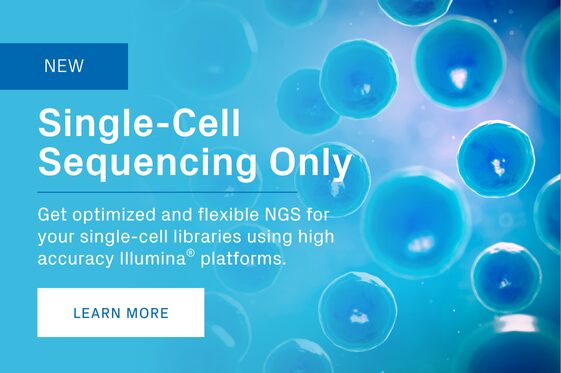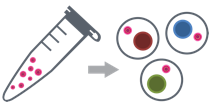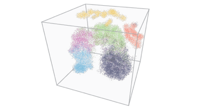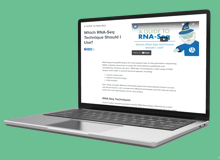Single-Cell RNA-Seq
Single-cell RNA sequencing (single-cell RNA-Seq or scRNA-Seq) is a technique that provides transcriptional profiling of thousands of individual cells to uncover transcriptome diversity in heterogeneous cell populations. Due to advances in microfluidics and molecular barcoding, transcriptional profiling of individual cells is cost-effective and easy to interpret. This level of throughput analysis enables you to understand at the single-cell level which genes are expressed, in what quantities, and how they differ within your sample.
As an early adopter of the 10x Genomics® Chromium™ and Illumina® NovaSeq™ 6000, our optimized workflows for single-cell RNA-Seq, including pre-submission cryopreservation and post-submission dead cell removal, maximize project flexibility, speed, and data accuracy.
For bulk expression analysis of samples with picograms of RNA or just a few cells, use our ultra-low input RNA-Seq service. Unsure which service is the right fit for your research goals? Browse our frequently asked questions (FAQs).
EBOOK
A Guide to
Single-Cell Sequencing
The ultimate resource for optimizing your single-cell project
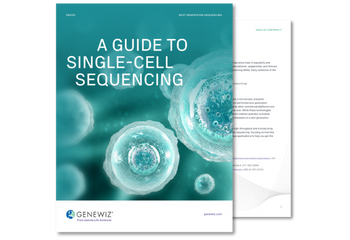
What is the difference between RNA-Seq and scRNA-Seq?
RNA sequencing (RNA-Seq) is used to measure average gene expression levels in a bulk population of cells by extracting and sequencing RNA from cell populations. ScRNA-Seq) is used to analyze gene expression at the single-cell level by sequencing the whole transcriptome of an individual cell.
How does scRNA-Seq work?
ScRNA-Seq works by isolating cells into individual compartments for construction of barcoded libraries prior to sequencing. The sequencing data is parsed according to the cell-specific barcodes and analyzed.
Single-Cell RNA-Seq Workflow
1. Cell Partitioning
Cells and barcoded beads are isolated in oil droplets using the 10x Genomics Chromium
2. Library Preparation
Reverse transcription incorporates cell- and transcript-specific barcodes
3. Sequencing
Barcoded libraries are pooled and sequenced on the Illumina platform
4. Data Analysis
Receive custom analysis and visualize results through interactive software
scRNA-Seq Features & Benefits
scRNA-Seq Technical Resources
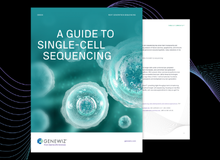
eBook │ A Guide to Single-Cell Sequencing
Whether you’re new to single-cell sequencing or looking to improve your data quality, this eBook provides a comprehensive overview of single-cell sequencing, focusing on how this technology works, optimized approaches to enhance results and use-case applications to help you get the most out of your research.
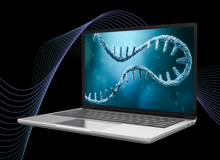
Webinar Series | Advancing Transcriptomics: Gene Expression Screening, Single-Cell RNA-Seq, and Beyond
With this two-part webinar series, go beyond traditional transcriptomics and learn about the various NGS approaches available for gene expression analysis. In part 1, we take an in-depth look at various gene expression approaches, including RNA-Seq, single-cell RNA-Seq, digital spatial profiling, and more. In part 2, we explore the data generated from these approaches and how they can complement each other and confirm findings.
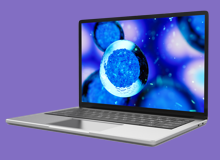
Webinar: Improving Single-Cell RNA-Seq Workflow Efficiency to Scale Clinical Research
In this webinar co-hosted by Azenta Life Sciences and 10x Genomics, learn how Clinical Research Organizations (CROs) provide expertise across the single-cell RNA sequencing (scRNA-Seq) workflow, including sample prep and experimental execution. This enables pharmaceutical and biotech clients to perform single-cell analysis at greater scale, efficiency, and reproducibility for clinical research.
NGS Platforms
For information on our NGS platforms as well as recommended configurations of your projects, please visit the NGS Platforms page. Azenta does not guarantee data output or quality for sequencing-only projects.





